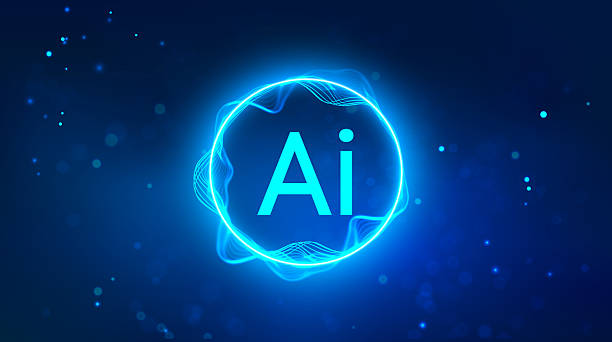What is an AI Robot? Definition, History, and Key Concepts
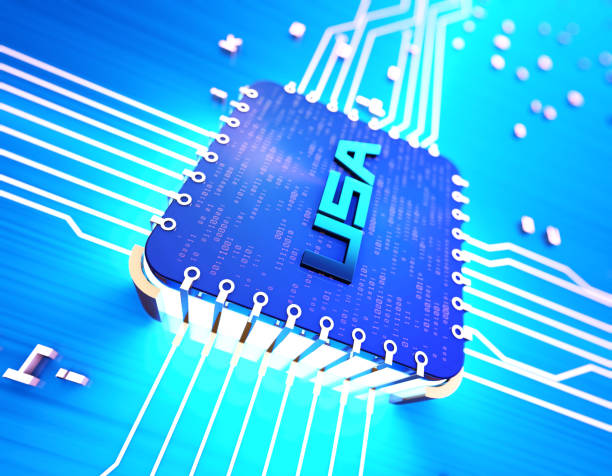
What is an AI Robot? Definition, History, and Key Concepts
#AI_robot (AI robot) is a combination of two fundamental concepts: robotics and artificial intelligence.
Robotics deals with the design, construction, operation, and use of robots, while artificial intelligence is a branch of computer science focused on creating systems that can perform tasks that typically require human intelligence.
Therefore, an AI robot is a robot that, using artificial intelligence algorithms and techniques, is capable of understanding its environment, making decisions, learning, and performing tasks autonomously.
These robots can be used across a wide range of industries and applications, from manufacturing and healthcare to customer service and space exploration.
The history of AI robots dates back decades, when researchers began to integrate AI concepts with robotics.
With technological advancements and the development of more complex algorithms, AI robots have become capable of performing more intricate tasks and interacting with their environment in more sophisticated ways.
Key concepts associated with AI robots include Machine Learning, Natural Language Processing, Computer Vision, and Planning.
AI robots collect information from the environment using sensors and cameras, and by processing this information, they make decisions.
These decisions can include movement, object manipulation, answering questions, or performing other tasks.
AI robots continuously learn from their experiences and improve their performance.
Did you know that a weak corporate website costs you many opportunities daily? Solve this problem forever with professional corporate website design by Rasaw!
✅ Create a powerful and reliable image for your brand
✅ Attract targeted new customers and increase sales
⚡ [Get Free Website Design Consultation]
Main Components of an AI Robot: Hardware and Software
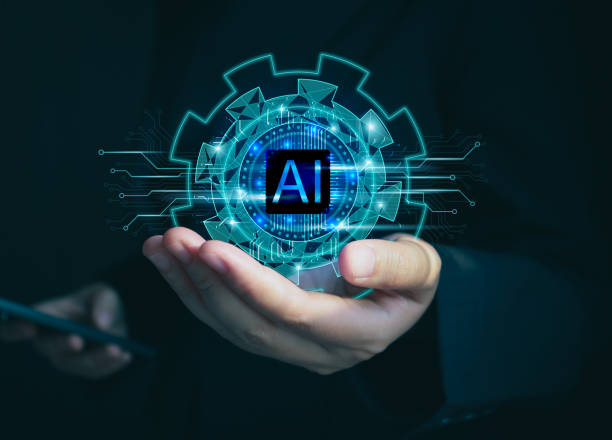
Main Components of an AI Robot: Hardware and Software
An AI robot consists of two main parts: hardware and software.
Hardware includes the physical components of the robot such as the body, motors, sensors, and controllers.
Software includes algorithms, programs, and data that allow the robot to think, learn, and act.
Generally, the main hardware components of an AI robot include the following:
- Robot body: The framework that holds other components together.
- Motors and actuators: Used for movement and manipulating objects.
- Sensors: For collecting information from the environment (e.g., cameras, LiDAR, temperature and pressure sensors).
- Controllers: For processing sensor information and controlling motors.
- Power source: For supplying energy to the robot.
The software components of an AI robot include the following:
- AI algorithms: For learning, decision-making, and problem-solving.
- Control programs: For controlling the robot’s movement and behavior.
- Data: For training AI algorithms.
- Robot Operating System (ROS): A software framework for developing robotic applications.
Coordination and interaction between hardware and software are essential for the proper functioning of an AI robot.
AI algorithms must be capable of processing sensor data and controlling motors in an efficient and effective manner.
The hardware must be powerful enough to meet the computational requirements of the software.
AI robots also have extensive applications in the automotive industry.
Types of AI Robots: Categorization by Application and Capabilities
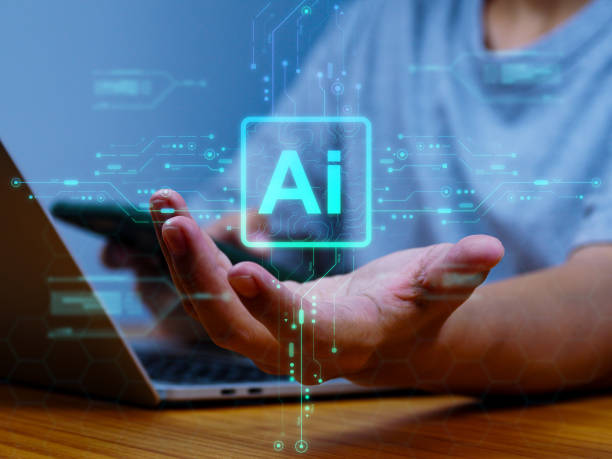
Types of AI Robots: Categorization by Application and Capabilities
AI robots can be divided into various categories based on their applications and capabilities.
Some of the most common categories include:
- Industrial Robots: These robots are used in factories and production lines to perform repetitive, dangerous, or precise tasks.
AI robots in this category can perform welding, painting, assembly, and packaging. - Service Robots: These robots are designed to provide services to humans.
AI robots in this category can be used in hospitals, hotels, restaurants, and homes. - Medical Robots: These robots are used in surgery, rehabilitation, drug delivery, and patient care.
AI robots can assist surgeons in complex operations and help patients recover faster. - Military Robots: These robots are used in reconnaissance, bomb disposal, surveillance, and warfare.
AI robots can save human lives on the battlefield and increase military efficiency. - Space Robots: These robots are used in planetary exploration, satellite repair, and space station construction.
AI robots can operate in dangerous and inaccessible environments for humans.
In addition to categorization by application, AI robots can also be categorized by their capabilities.
For example, some robots are capable of autonomous movement, while others require a human operator.
Some robots are capable of learning and adapting to their environment, while others can only perform predefined tasks.
| Robot Type | Applications | Capabilities |
|---|---|---|
| Industrial | Production lines, factories | Welding, painting, assembly |
| Service | Hospitals, hotels, restaurants | Providing services to humans |
| Medical | Surgery, rehabilitation, drug delivery | Assisting surgeons, patient care |
| Military | Reconnaissance operations, bomb disposal | Protecting human lives, increasing efficiency |
| Space | Planetary exploration, satellite repair | Operating in dangerous environments |
Applications of AI Robots in Various Industries

Applications of AI Robots in Various Industries
AI robots are transforming various industries.
These robots can perform tasks that are dangerous, difficult, or tedious for humans.
Some of the most important applications of AI robots in various industries include:
- Manufacturing: AI robots are used in factories for tasks such as assembly, packaging, quality inspection, and material handling.
AI robots can increase productivity, reduce costs, and improve product quality. - Healthcare: AI robots are used in hospitals and medical centers for tasks such as surgery, rehabilitation, drug delivery, and patient care.
AI robots can increase surgical precision, reduce patient recovery time, and assist doctors in diagnosing and treating diseases. - Customer Service: AI robots are used in call centers, websites, and mobile applications to provide customer service.
AI robots can answer customer questions, resolve their issues, and process their orders. - Logistics and Transportation: AI robots are used in warehouses, distribution centers, and trucks for tasks such as sorting packages, loading and unloading goods, and autonomous driving.
AI robots can increase the speed and efficiency of logistics and transportation operations. - Agriculture: AI robots are used on farms for tasks such as planting, irrigation, harvesting, and crop spraying.
AI robots can increase agricultural productivity, reduce costs, and help protect the environment.
In general, AI robots are rapidly replacing human labor in many industries due to their high precision, speed, and ability to work in harsh conditions.
Tired of your e-commerce website not generating as much revenue as it could? Rasaw, specializing in professional e-commerce website design, will solve this problem for good!
✅ Increase sales conversion rates and revenue
✅ High loading speed and unparalleled user experience
⚡ Get Free E-commerce Website Design Consultation
Benefits of Using AI Robots: Increased Productivity, Reduced Costs, and Improved Quality

Benefits of Using AI Robots: Increased Productivity, Reduced Costs, and Improved Quality
The use of AI robots offers numerous benefits for businesses and society.
Some of the most important benefits include:
- Increased Productivity: AI robots can work 24/7 without interruption, leading to increased productivity and higher output.
- Reduced Costs: AI robots can lower labor, raw material, and energy costs.
- Improved Quality: AI robots can perform tasks with greater precision and consistency than humans, leading to improved product and service quality.
- Enhanced Safety: AI robots can perform dangerous or difficult tasks, leading to a reduction in workplace injuries and fatalities.
- Creation of New Job Opportunities: Although AI robots may eliminate some jobs, they also create new job opportunities in the design, manufacturing, maintenance, and operation of robots.
By automating repetitive and tedious tasks, AI robots allow humans to focus on more creative and strategic endeavors.
The use of AI robots in various industries requires careful consideration and proper planning to maximize their benefits.
Challenges in the Development and Use of AI Robots: Ethical, Security, and Social Issues

Challenges in the Development and Use of AI Robots: Ethical, Security, and Social Issues
The development and use of AI robots also come with several challenges.
Some of the most important challenges include:
- Ethical Issues: The use of AI robots can raise numerous ethical concerns, such as accountability for robot errors, privacy protection, and discrimination.
- Security Issues: AI robots can be hacked and used for malicious purposes, such as espionage, destruction, and cyber-attacks.
- Social Issues: The use of AI robots can lead to job displacement, increased inequality, and reduced social interactions.
- Technical Issues: Developing AI robots is complex and expensive, requiring high levels of expertise and technical knowledge.
AI robots, despite their numerous benefits, require special attention to the ethical and social issues associated with them.
Establishing appropriate laws and regulations for the use of AI robots can help mitigate risks and enhance their benefits.
For example, AI robots in medical decision-making should be supervised by specialist doctors to prevent severe errors.
The Future of AI Robots: Prospects, Predictions, and Key Trends
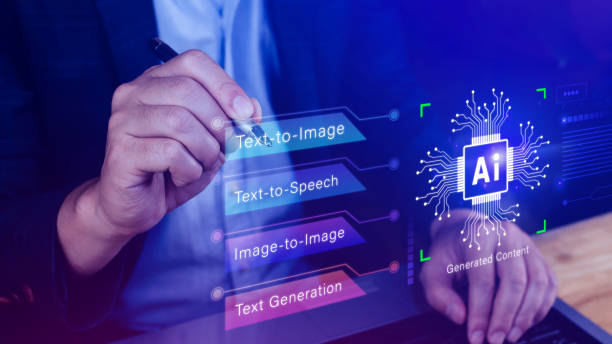
The Future of AI Robots: Prospects, Predictions, and Key Trends
The future of AI robots appears very bright and exciting.
It is expected that in the coming years, AI robots will become smarter, more powerful, and more versatile.
Some of the most important key trends in the future of AI robots include:
- Increased Intelligence: AI robots will be able to perform more complex tasks, make better decisions, and interact with humans more naturally.
- Increased Autonomy: AI robots will be able to operate for longer periods without human intervention.
- Enhanced Collaboration: AI robots will be able to collaborate more effectively with each other and with humans.
- Reduced Cost: The cost of designing, manufacturing, and maintaining AI robots will decrease, leading to their more widespread use.
- Expanded Applications: AI robots will be used in new industries and applications.
In the future, AI robots will play a more significant role in our daily lives.
They will help us with daily tasks, improve our quality of life, and provide new opportunities for growth and development.
However, it is important to pay attention to the challenges associated with AI robots and strive to solve them.
Impact of AI Robots on the Job Market: At-Risk Jobs and New Opportunities

Impact of AI Robots on the Job Market: At-Risk Jobs and New Opportunities
One of the most significant concerns regarding AI robots is their impact on the job market.
Some experts believe that AI robots could eliminate many jobs, while others argue that they will create new job opportunities.
The reality is that AI robots both threaten existing jobs and create new opportunities.
Jobs most at risk of automation are those that are repetitive, routine, and low-skilled.
These jobs include factory workers, truck drivers, receptionists, and telephone operators.
On the other hand, AI robots create new job opportunities in the fields of designing, manufacturing, maintaining, and operating robots.
These jobs include robotics engineers, data scientists, AI analysts, and automation specialists.
| At-Risk Jobs | New Jobs Created |
|---|---|
| Production line workers | Robotics engineers |
| Truck drivers | Data scientists |
| Receptionists | AI analysts |
| Telephone operators | Automation specialists |
To benefit from AI robots and prevent their potential risks, we must prepare education and training for future jobs and implement appropriate support policies for workers who lose their jobs.
AI robots, as a powerful tool, can contribute to economic and social development, but require proper management and careful planning.
Is your e-commerce website ready to attract maximum customers and increase sales? Rasaw will transform your online business with modern and efficient e-commerce website designs.
✅ Increased speed and improved SEO
✅ Excellent user experience on mobile and desktop⚡ Get Free E-commerce Website Design Consultation from Rasaw!
Key Tips for Choosing and Implementing AI Robots in Business

Key Tips for Choosing and Implementing AI Robots in Business
Choosing and implementing AI robots in business is a complex process that requires careful planning and attention to key points.
Some of the most important tips include:
- Define Objectives: First and foremost, you must define your objectives for using AI robots.
What problems do you want to solve? What goals do you want to achieve? - Assess Needs: Accurately assess your needs.
What tasks do you want to assign to robots? What capabilities do you expect from the robots? - Select the Right Robot: Choose a robot that suits your needs and objectives.
Consider factors such as price, capabilities, ease of use, and technical support. - Proper Implementation: Implement the robot correctly.
Provide necessary training to your employees and ensure adequate technical support. - Measure Performance: Regularly measure the robot’s performance.
Has the robot achieved your objectives? Do you need to make any changes to the implementation?
AI robots are a significant investment for your business.
By following the above tips, you can maximize the benefits of this investment.
Also, keep in mind that using AI robots requires changes in your work processes and organizational structure.
Case Studies: Examples of Successful AI Robot Applications
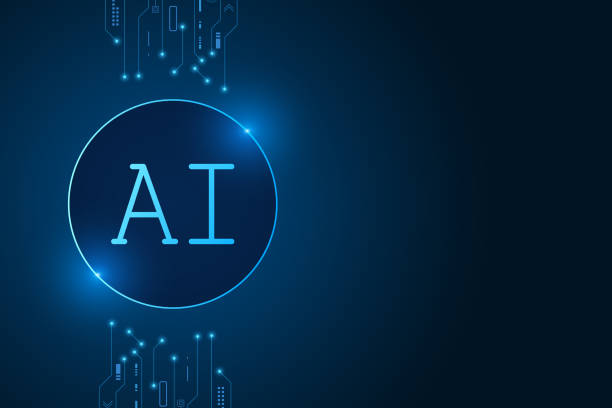
Case Studies: Examples of Successful AI Robot Applications
To better understand the applications of AI robots, we can refer to case studies of their successful uses in various industries:
- Amazon: Uses AI robots for sorting and packaging goods in its warehouses.
This has led to increased speed and efficiency in logistics operations and reduced costs. - Google: Uses AI robots for autonomous vehicle driving.
This technology can lead to a reduction in road accidents, air pollution, and increased transportation efficiency. - IBM: Uses AI robots to provide customer service in its call centers.
This has resulted in increased customer satisfaction and reduced customer service costs. - Boston Dynamics: Has developed advanced AI robots for various applications, including search and rescue, transportation, and construction.
AI robots have high potential to improve the performance and efficiency of businesses across various industries.
By examining successful case studies, new ideas for using this technology in your business can be gained.
For example, AI robots in agriculture can be used for detecting plant diseases and smart irrigation of farms.
Frequently Asked Questions
| No. | Question | Answer |
|---|---|---|
| 1 | What is an AI robot? | An AI robot is a machine capable of understanding, reasoning, learning, and problem-solving, and can perform complex tasks with relative autonomy. |
| 2 | What are the most important applications of AI robots? | Key applications include industrial manufacturing, customer service (chatbots), medicine and surgery, autonomous transportation, space exploration, and military affairs. |
| 3 | What is the main difference between an AI robot and a regular robot? | A regular robot only follows programmed instructions, whereas an AI robot can learn from data, make decisions, and adapt to new environments. |
| 4 | How do AI robots learn? | They learn by identifying patterns through machine learning algorithms (such as deep learning, reinforcement learning) and processing vast amounts of data, thereby improving their performance. |
| 5 | Can AI robots have emotions? | Currently, AI robots do not possess real emotions in the human sense. They can imitate or detect emotions, but they do not understand or experience them. |
| 6 | What are the current limitations of AI robots? | Limitations include the need for large amounts of data, inability to understand abstract concepts, lack of true creativity, ethical issues, and challenges in generalization to new environments. |
| 7 | What is the role of AI in the development of humanoid robots? | AI helps humanoid robots walk, maintain balance, understand their surroundings, interact with humans, and perform complex tasks. |
| 8 | How is the future of AI robots predicted? | It is predicted that AI robots will become smarter, more autonomous, and capable of performing more complex tasks in daily life and industry, with their interaction with humans increasing. |
| 9 | Can AI robots replace all human jobs? | It is unlikely that all human jobs will be replaced. Robots will take over many repetitive and dangerous tasks, but jobs requiring creativity, empathy, and ethical judgment will remain. |
| 10 | What ethical and social challenges arise with the expansion of AI robots? | Challenges include issues related to privacy, data security, ethical decision-making by robots, impact on employment, and accountability in case of errors. |
And Other Advertising Services of Rasa Web Advertising Agency
- Smart Social Media: An effective tool for online growth with Google Ads management.
- Smart Social Media: Revolutionize click-through rates with engaging UI design.
- Smart Advertorial: A blend of creativity and technology for analyzing customer behavior through user experience customization.
- Smart Google Ads: Designed for businesses seeking campaign management through SEO-driven content strategy.
- Smart Marketplace: Designed for businesses aiming for user engagement through precise audience targeting.
And over hundreds of other services in internet advertising, advertising consultation, and organizational solutions
Internet Advertising | Advertising Strategy | Advertorial
Sources
What is an AI Robot?
Applications of Artificial Intelligence in Life
Artificial Intelligence and Robotics
The Revolution of Smart Robots in Industry
🚀 With Rasaw Afarin, your business takes flight in the digital world! We create a powerful and lasting presence for your brand by providing services such as secure website design, search engine optimization (SEO), and targeted advertising campaigns.
📍 Tehran, Mirdamad Street, next to Bank Markazi, Southern Kazeroon Alley, Ramin Alley, No. 6

